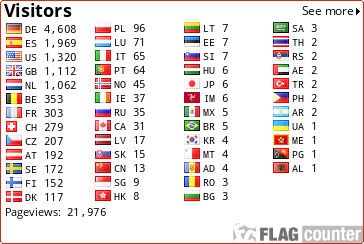Los Hervideros - Lanzarote - Islas Canarias EarthCache
Los Hervideros - Lanzarote - Islas Canarias
-
Difficulty:
-

-
Terrain:
-

Size:  (not chosen)
(not chosen)
Please note Use of geocaching.com services is subject to the terms and conditions
in our disclaimer.
Note:- There is no admission charge to visit this site. A wheelchair friendly cache although if you want to see the whole site, a wheelchair would not be suitable.
An interesting article on a similar theme (whilst not needed for this cache) is here
Los Hervideros means "The Boiling Place" in Spanish. It refers to the impression you get that the water is boiling against the rocks as it smashes into them. It is well worth following the paths into the rocks and looking down into the passages amongst them. The water is forced into these passages and "bubbles" and "steams" quite dramatically.

Los Hervideros
Los Hervideros were created between the years 1730-6 when the Timanfaya volcanoes exploded and large quantities of lava were expelled into the surrounding areas. Indeed such was the volume of lava emitted between 1730-6 that the island of Lanzarote increased in size by 174 square kilometres.
At Los Hervideros you can clearly see where the molten rock hit the sea and where it has solidified into beautiful shapes and colours. Most of Lanzarote is made up of comparatively recent Volcanic rock and hence most of the island is a very black colour (an exception is up around La Santa where it is much older and actually a sandy yellow. This gives a clue that Lanzarote is surprisingly one of (if not the) oldest of all the Canary Islands being approx 16-20 million years old.
Another good way to tell whether the lava is comparatively recent is to look whether any plants have managed to start growing in/on it. In large parts of Lanzarote this has not happened, showing that a lot of the island is very recent.
The Canary Islands are actually the visible ends of volcanoes that have been pushed up from the floor of the Atlantic Ocean, so Lanzarote can be thought of a bit like an iceberg in that the visible part of the island is much smaller than the submerged part.
You can find Los Hervideros on the Old Road between Playa Blanca (White Beach) and El Golfo (where there is another Earth Cache and a spectacular view).
To log this cache please answer the following questions and (optionally) take a picture of your GPS (and ideally yourself too) against the large rusty metal sign.
(1) - Is Lanzarote still volcanically active? (a visit to Timanfaya will convince you of the answer to this if you aren't sure!)
(2) - What is the material that the lava cliffs are made from? (it's a 6 letter word beginning with B, and a google search on "los hervideros cliffs jagged" may help!
(3) - Estimate for me what height the water is being thrown into the air when waves hit the lava. Obviously this will vary depending on a few factors. Tell me what factors you can think would influence the height the water is thrown on the day of your visit.
Once you know the answers, please email me (if you want an answer, please don't block your email address). When I respond that you have the correct answers, please log your find and include your photo of your GPS by the rusty "Los Hervideros" sign. Logs made where answers have not been submitted will be deleted!
(Old question 2 has been replaced with a new Q2, the old one caused too many problems, but you can still try it for a "bonus" if you like! - (2) - The following are all types of Volcanoes: "shield volcanoes, lava domes, cinder cones, stratovolcanoes and supervolcanoes". Which one of these types of volcano are the ones you find on Lanzarote?)
 Counter added 09th Jan 2010
Counter added 09th Jan 2010
Additional Hints
(Decrypt)
Gb svaq gur ehfgl fvta, sbyybj gur sbbgcngu ebhaq gb gur yrsg bs gur cnexvat nern